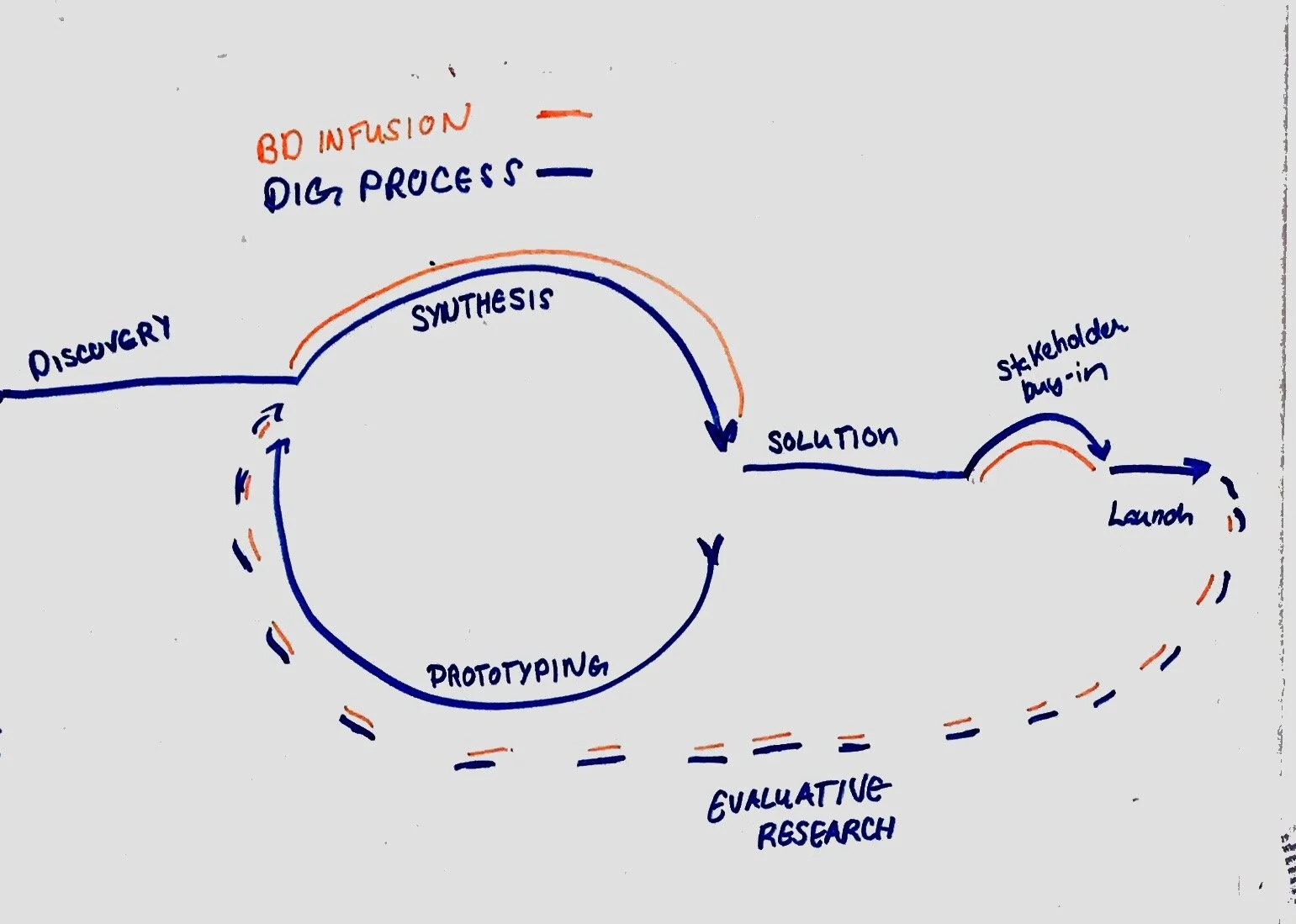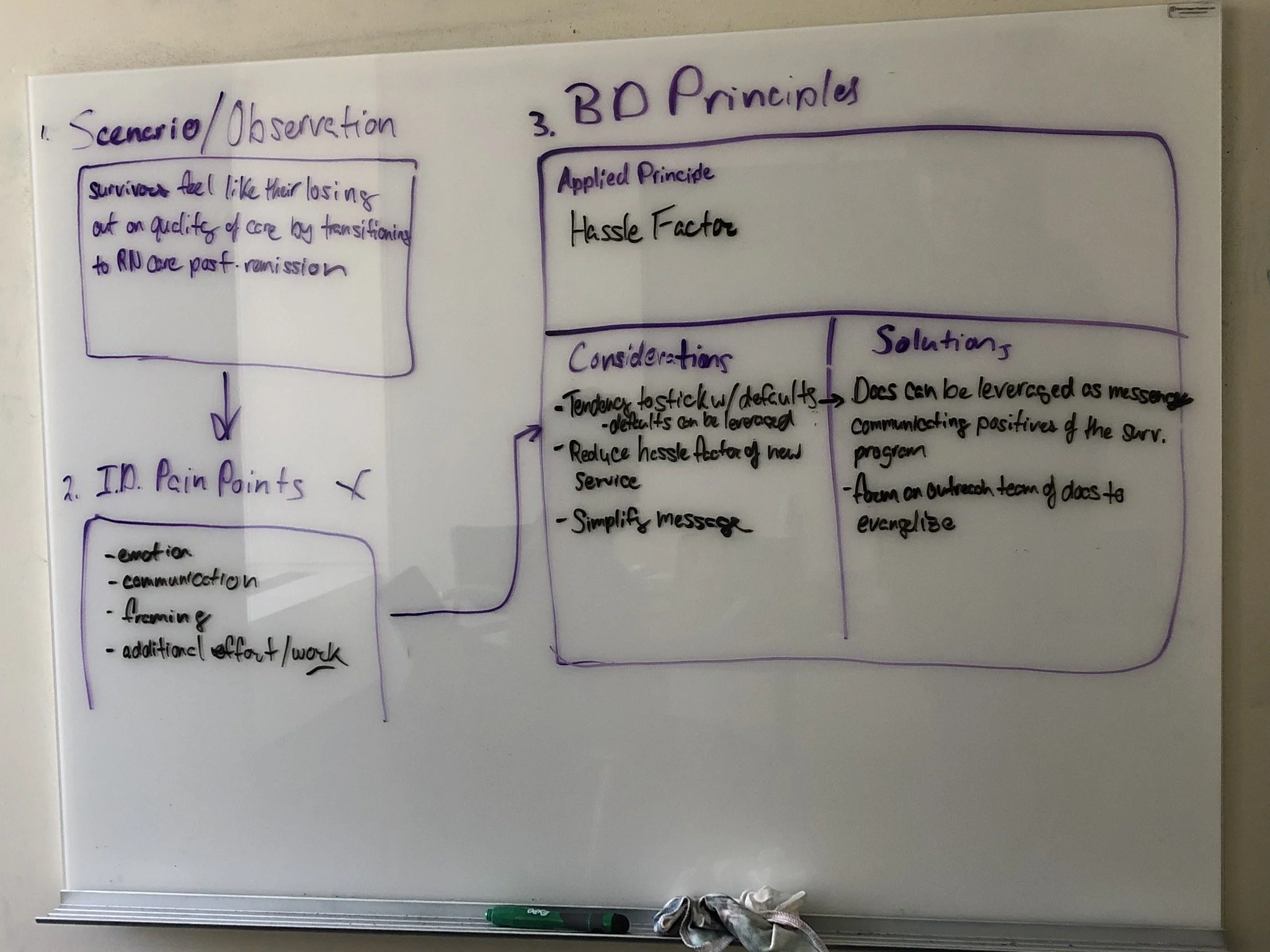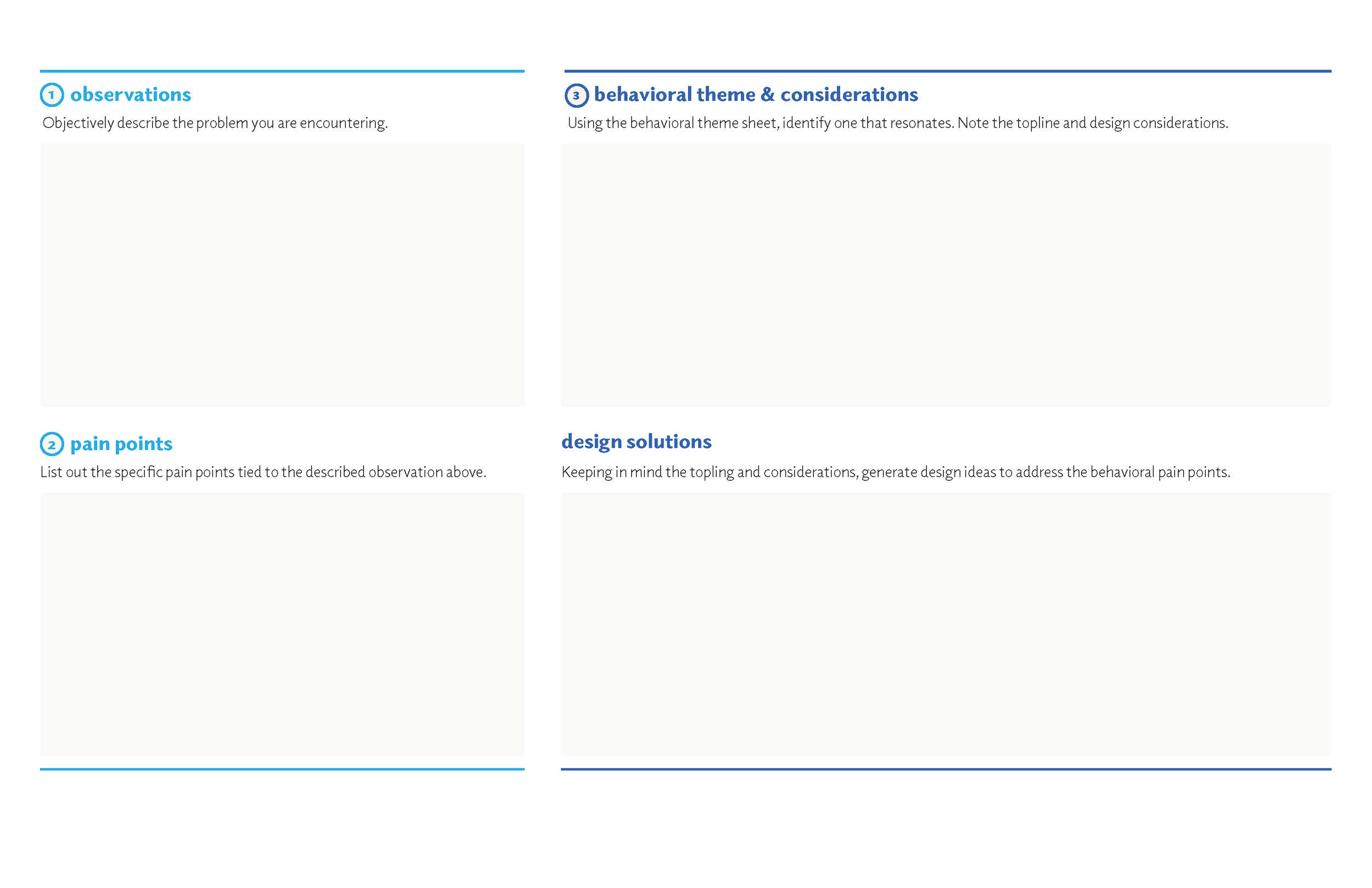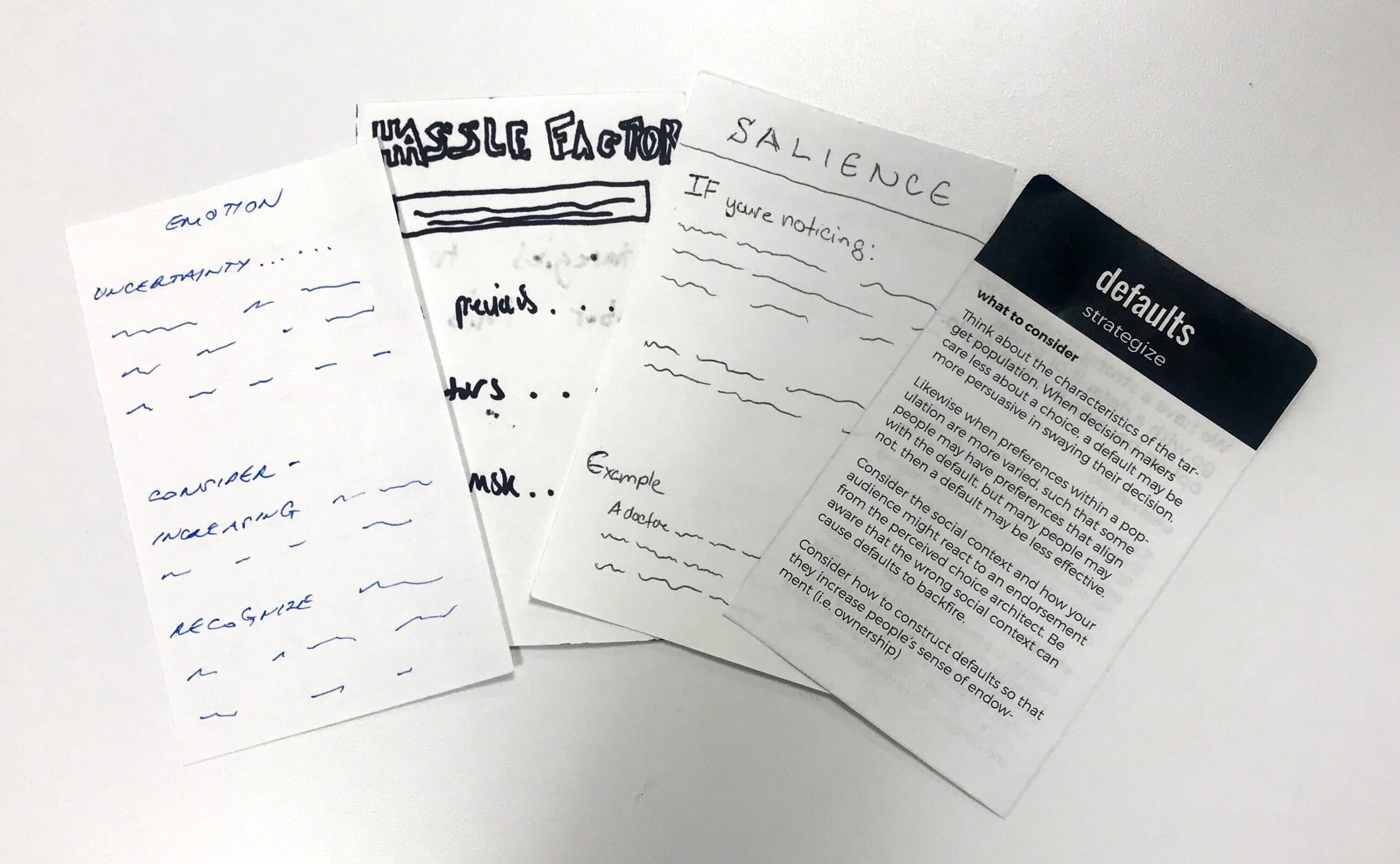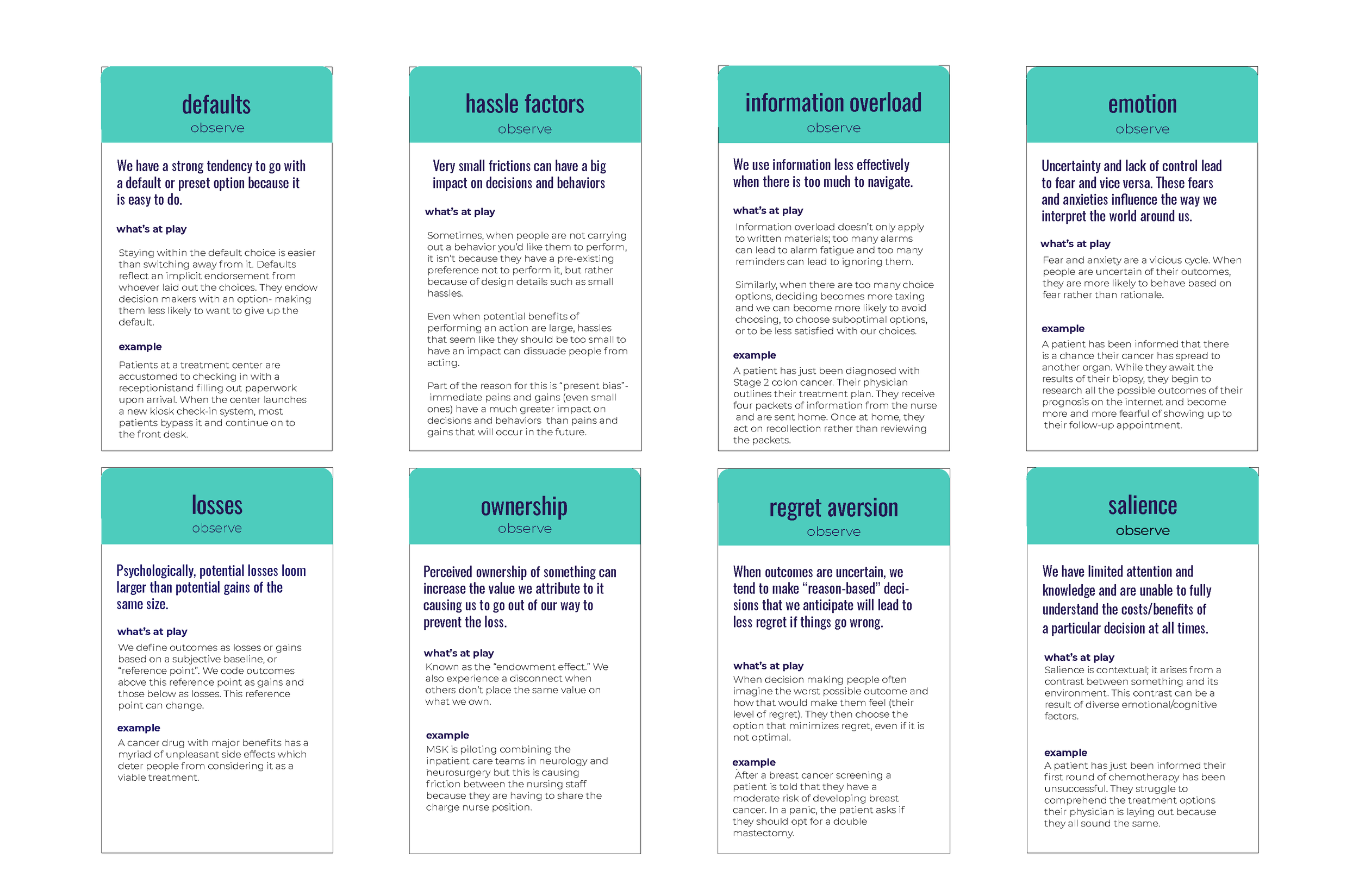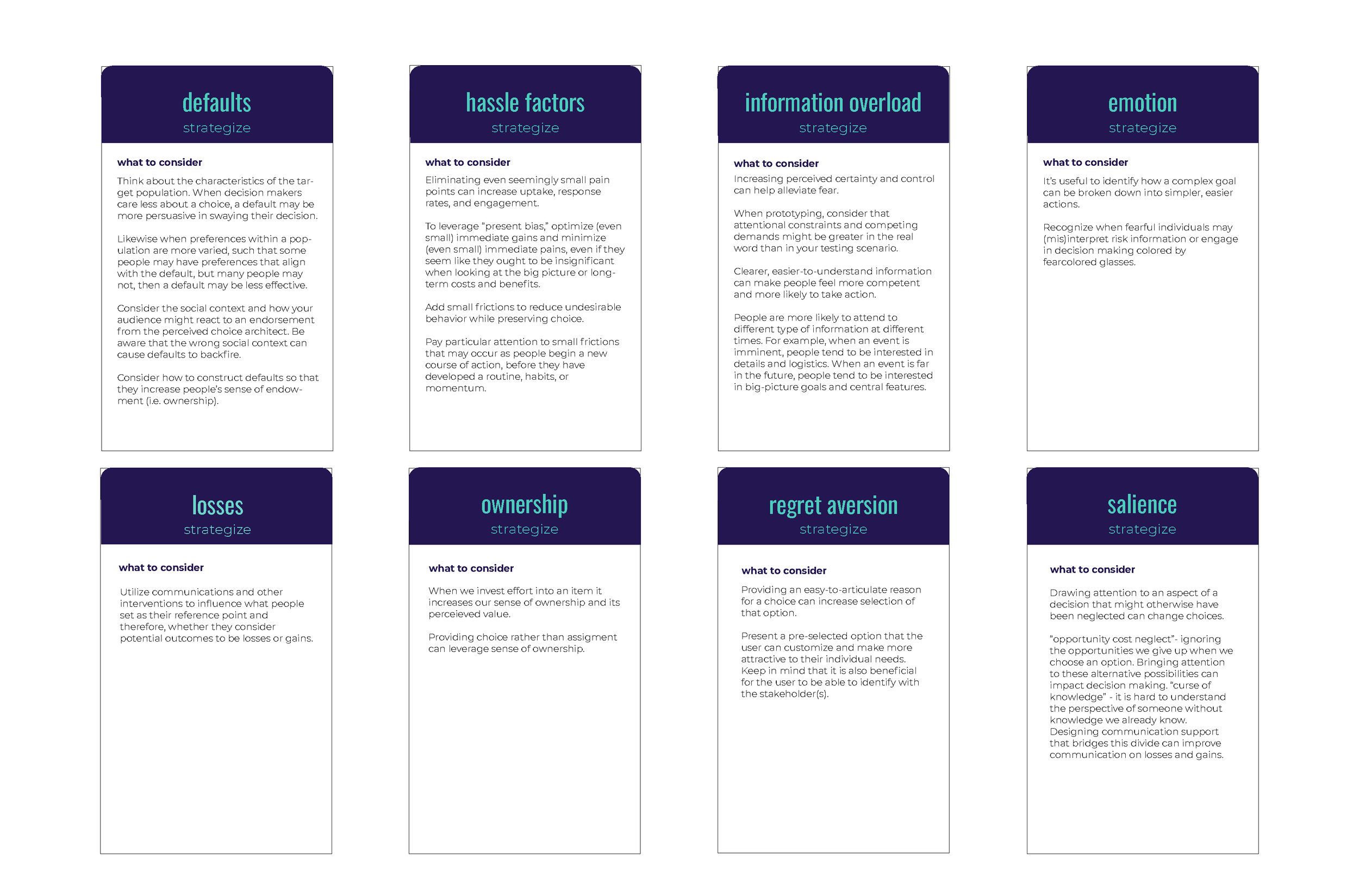
Behavioral Design Toolkit: Innovating Design Processes at Memorial Sloan Kettering Cancer Center
The Scenario
A three-month fellowship at Memorial Sloan Kettering Cancer Center to produce a collaborative project and develop a behavioral design methodology for the Design and Innovation Group (DIG). The solution focuses on integrating behavioral science insights into the design process to improve the adoption and outcomes of design solutions for patients and clinicians.
The Challenge
The linear scientific nature of behavioral science often clashes with the iterative nature of design.
The Behavioral Scientist on staff had strong opinions about how design solutions should be vetted and needed an approach that facilitated productive engagement with the Designers on staff.
Both parties needed a shared language to improve collaboration and convert scientific theories into actionable solutions
User interviews with DIG team members
Observational research during prototyping sessions
Collaborative design sprints
Literature review of Behavioral Science theories and methodologies
Developed the B-Card methodology, a flexible framework for:
Incorporating behavioral science insights
Adaptable across multiple industries
Specifically tailored for service-oriented healthcare design
The Solution
The Outcome
Key Findings and Recommendations
Behavioral Science Integration Challenges
Friction between linear scientific processes and flexible design methodologies
Varying success of previous behavioral science collaborations
Inconsistent understanding of behavioral science principles
Workshop Insights
Reviewed 20 top-line behavioral science principles
Identified most frequently encountered principles
Mapped design process with behavioral science "infusion points"
Created a framework for introducing behavioral science principles into the design process
Key Observations
Some designers misidentified or conflated behavioral science definitions
Designers found behavioral science principles most helpful when developing stakeholder buy-in for projects
Garnering stakeholder buy-in occurs at multiple stages of the design process, and without it, designers on the DIG team risked wasting hours of R&D
01 Mapping the Process
02 Developing a Framework
03 Co-Designing the Solution
04 Prototyping the B-Card
A summarized version of the DIG team’s design process. The orange lines signify the phases where behavioral science approaches had a positive impact on overall project outcomes. The dashed orange lines signify the phase where behavioral science had yet to be incorporated but showed promising potential for positive outcomes.
Whiteboard sketch session depicting our worked-through example using the first iteration of the Behavioral Design framework
We presented the prototype framework to the DIG team and asked them to use it to work through a current project. With their feedback and suggestions, we realized the framework needed an more dynamic component to introduce behavioral science insights.
We learned the DIG team were used to working with card decks to prompt ideation and we decided to leverage that mental model and create a deck of cards with behavioral design insights and strategies.
Impact and Reception
Conclusions
Improved Design Process: The methodology enhanced DIG's ability to incorporate behavioral science insights into their design workflow.
Cross-disciplinary Collaboration: The project fostered collaboration between designers and the behavioral scientist on staff, breaking down silos and encouraging more integrated approaches to healthcare design.
Customized Tool: By developing a methodology specific to DIG's needs in healthcare, the B-Card approach resonated well with the team and addressed their unique challenges.
Increased Awareness: The process of developing the methodology raised awareness about behavioral science principles among the design team, leading to more informed design decisions.
Adaptability: The flexibility of the B-Card methodology made it well-received and can potentially adopted beyond the initial healthcare context.
The DIG team expressed positive feedback for the B-Card methodology. They felt the cards could easily be leveraged during meetings and discussions. Because we adopted a co-design methodology, the B-Cards served as a tool that the DIG team owned and endorsed with their own feedback, successfully easing the tension between the behavioral science approach and the iterative design approach.
